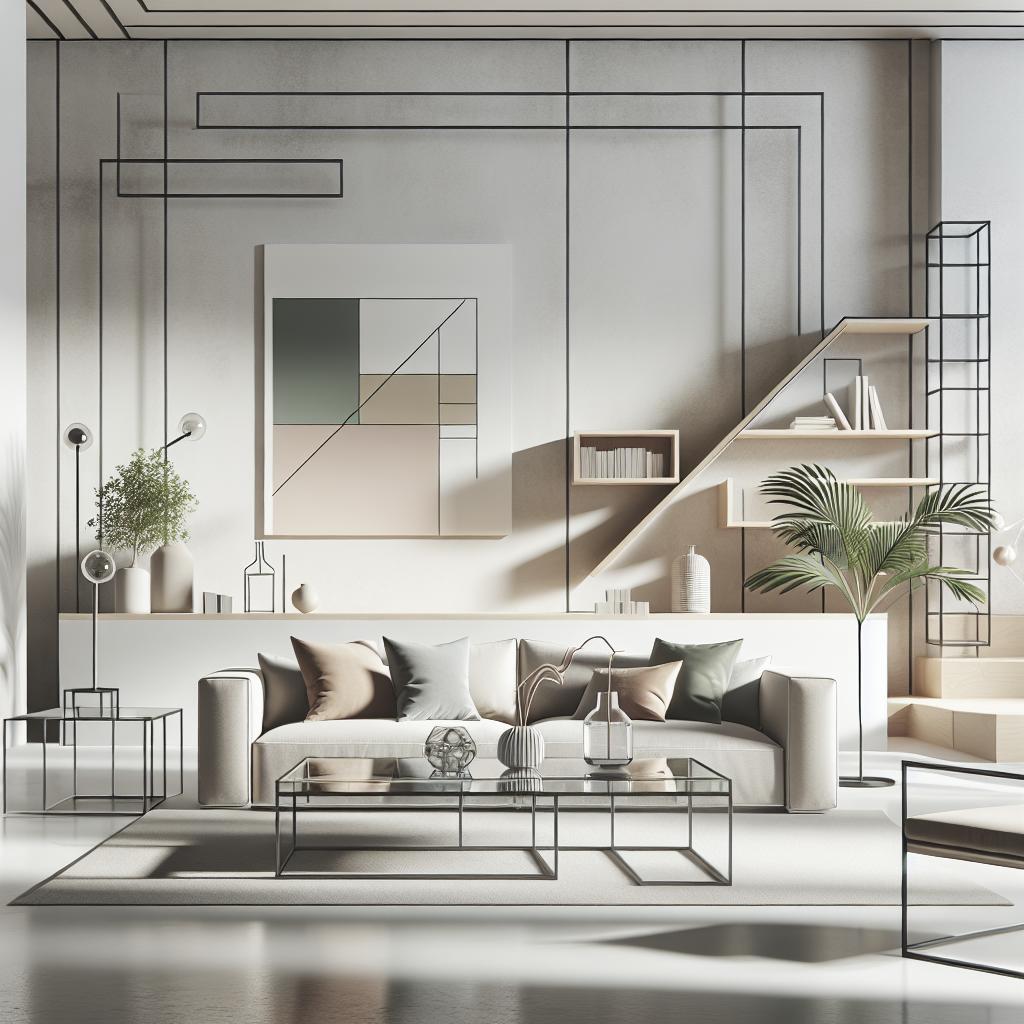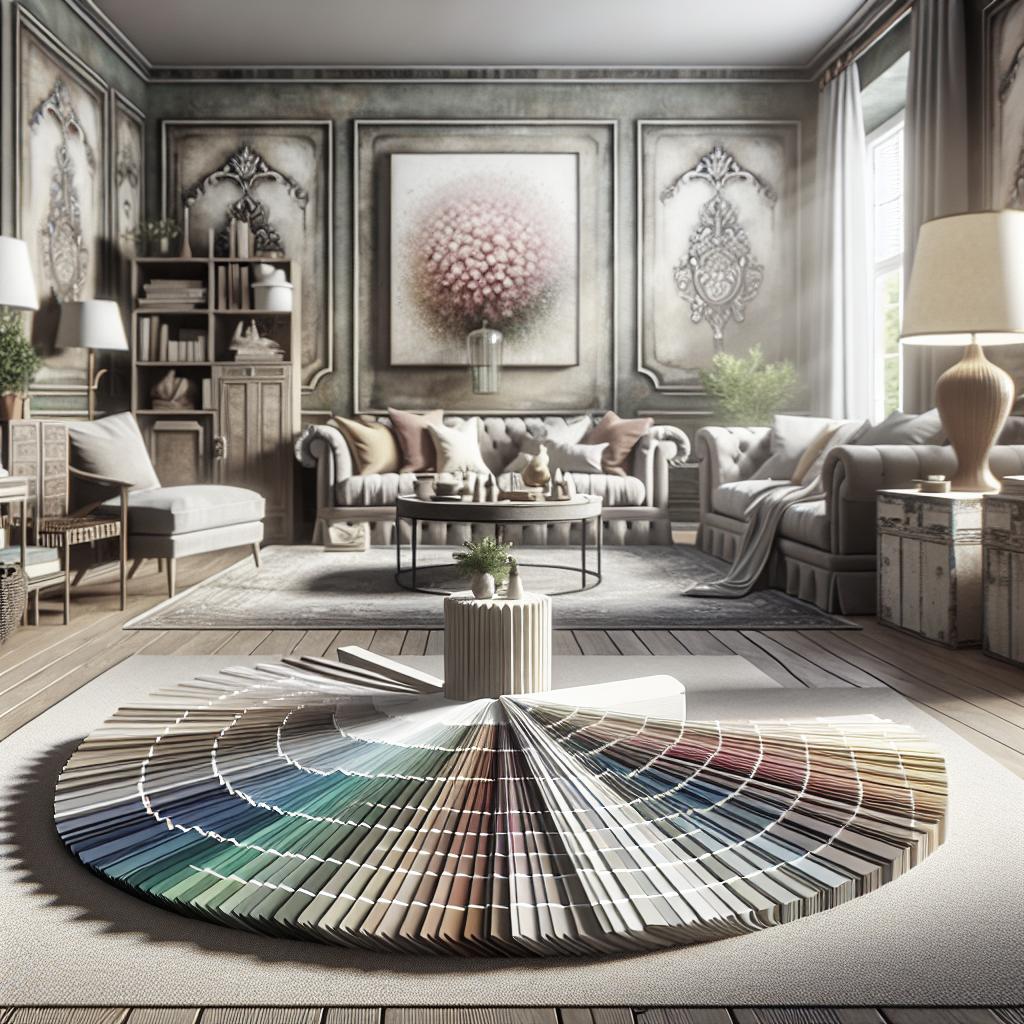Creating Your Oasis: Understanding Minimalist Interior Design In an era where distractions and excess abound, minimalist interior design offers a breath of fresh air, promoting tranquility and simplicity. This blog post navigates through the realm of minimalism, starting with an overview of what minimalist interior design truly embodies. As we journey through its historical roots, we’ll uncover the origins and evolution of this clean, serene style. The core elements and defining characteristics of minimalist designs will be laid bare, offering insight into its understated elegance. By examining stunning examples, you’ll be inspired by how minimalism is artfully executed worldwide. Finally, we’ll provide practical tips for transforming your own living space into a minimalist haven, blending style with serenity seamlessly. Whether you’re an enthusiast or new to minimalist interiors, this guide will illuminate the path to creating a beautifully simplistic yet functional home. ### What is minimalist interior design? Minimalist interior design is a refined art form that emphasizes simplicity through the utilization of neutral colors, uncluttered spaces, and functional furniture. Its primary aim is to create a calming environment by stripping away the unnecessary to focus on what truly matters. Instead of relying on decorative excess, minimalist design thrives on the ‘less is more’ principle, where each element serves a purpose and adds value to the space. This design philosophy encourages individuals to live mindfully and consciously, reducing clutter both physically and mentally. Minimalism in interior design is not just about aesthetics; it’s a lifestyle choice that promotes sustainable and mindful living environments. Its appeal lies in the tranquility and clarity it brings, allowing spaces to breathe without overwhelming occupants with distractions. As more people seek refuge from the chaotic pace of modern life, minimalist design offers a sanctuary of simplicity and peace. ### History of minimalist interior design The roots of minimalist interior design can be traced back to post-World War II Western art, prominently during the 1960s and 1970s. Influenced by traditional Japanese design and Zen philosophy, it emphasizes clarity through simplicity and harmony. Mid-century modern architects like Mies van der Rohe famously adopted the ‘less is more’ mantra, guiding the movement with an eye for clean lines and functional spaces. Incorporating elements of Bauhaus and De Stijl movements, minimalist design emerged as a rebellion against the excesses of the previous decades. It stripped away ornamentation, embraced geometry, and focused on the integrity of materials. This design ethos was further popularized in the late 20th century by designers and architects like Le Corbusier, who advocated for open spaces devoid of frivolous decoration. The resulting modern minimalist movement continues to evolve, reflecting a blend of contemporary influences and the timeless principles established by its pioneering figures. Today, minimalist design caters to the growing demand for spaces that provide both visual and mental clarity, offering a timeless aesthetic that transcends fleeting trends. ### Defining elements and characteristics of minimalist interior design At the heart of minimalist design lies a distinct set of principles that define its serene, uncluttered aesthetic. Neutral color palettes stand as a hallmark, adopting hues like whites, grays, and creams to evoke a sense of calm and spaciousness. These colors are occasionally complemented by muted earth tones to add depth without overwhelming noise. The characteristics of minimalism also include a focus on functional furnishings, where every piece serves a purpose, often showcasing clean lines and simple forms. Materials like glass, metal, and natural woods are favored for their aesthetic purity and durability. Open spaces free from extraneous items contribute to a streamlined look, enhancing the flow of rooms and highlighting architectural elements. In terms of decoration, minimalism opts for subtle details and sparing use of accessories. The philosophy prizes quality over quantity, with curated art or sculptures taking precedence over cluttered displays. Ultimately, minimalist interior design champions an intentional lifestyle where spaces are designed to foster peace, clarity, and functional beauty. ### Examples of minimalist interior design When it comes to illustrating minimalist design, Scandinavian interiors are exemplary representations of the movement’s ethos. Known for their light-filled spaces, Nordic homes emphasize natural materials, soft hues, and streamlined furniture pieces. With an intuitive grasp of maximizing functionality, Scandinavians create spaces that are both cozy and clutter-free, offering a masterclass in minimalism. Japanese interior design showcases another iconic expression of minimalism, influenced by Zen principles and a deep appreciation for nature. These spaces prioritize simplicity, with tatami mats, shoji screens, and neutral palettes that harmonize with the surrounding environment. The Japanese concept of ‘Ma’ – the negative space – is a prominent feature, allowing rooms to breathe and fostering a tranquil atmosphere. Modern minimalist homes around the globe adapt these principles, blending them with contemporary lifestyles. Open-plan living areas with large windows, minimalist kitchens devoid of ornamentation, and simplified bedroom retreats are common. These examples demonstrate how minimalism’s core philosophy translates into diverse cultural contexts, evolving yet retaining its foundational spirit of clarity and calm. ### How to achieve minimalist interior design in your home Achieving minimalist interior design within your home requires focus, discipline, and an eye for cohesion. Begin by decluttering, removing items that don’t serve a functional or aesthetic purpose. This step paves the way for a simplified environment and mental clarity. Once decluttered, prioritize quality over quantity, investing in a handful of timeless furnishings that offer utility without compromising on style. Strive for a harmonious color palette, sticking to neutral tones and eliminating loud colors that disrupt the serene ambiance. Textures and materials should speak to each other, creating a unified look. Natural light should be maximized with the use of sheer curtains or blinds, enhancing the feeling of openness and tranquility. Finally, pay attention to small details that elevate the minimalist aesthetic. Incorporate carefully chosen artwork or statement pieces, but keep decorations to a minimum to preserve visual calm. Embrace the notion of negative space, allowing areas to breathe and minimizing distractions. Through deliberate choices and mindful living, you’ll create a minimalist sanctuary that reflects simplicity, elegance, and function beautifully intertwined. ### Future prospects | Aspect | Description | |——–|————-| | What is minimalist interior design? | A design style focused on simplicity, neutral color palettes, and functional furniture to promote tranquility. | | History | Originated in post-World War II, influenced by Japanese design, emphasizing simplicity and harmony. Evolved from Bauhaus and De Stijl movements, popularized by architects like Le Corbusier. | | Defining Elements | Neutral colors, functional furnishings, use of natural materials like wood and glass, open spaces, and minimal decoration. | | Examples | Scandinavian and Japanese interiors exemplify minimalism through light, natural materials, and understated elegance. Modern minimalist homes worldwide blend tradition with contemporary styles. | | Achieving at Home | Declutter, focus on quality furnishings, use neutral palettes, maximize natural light, and embrace negative space for a serene environment. | Embarking on the journey towards a minimalist interior is an invitation to cultivate peace and intentional living. As trends continue to evolve, the principles of minimalist design stand steadfast, offering timeless elegance and a refuge from the increasingly chaotic world. By embracing simplicity, we open ourselves to creativity, mindfulness, and a profound appreciation for our surroundings.
Creating Serenity: A Guide to Designing a Minimalist Interior


